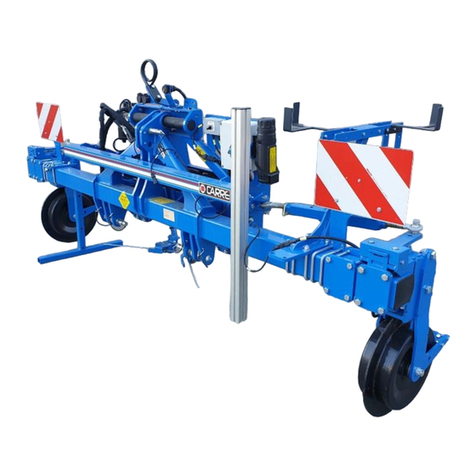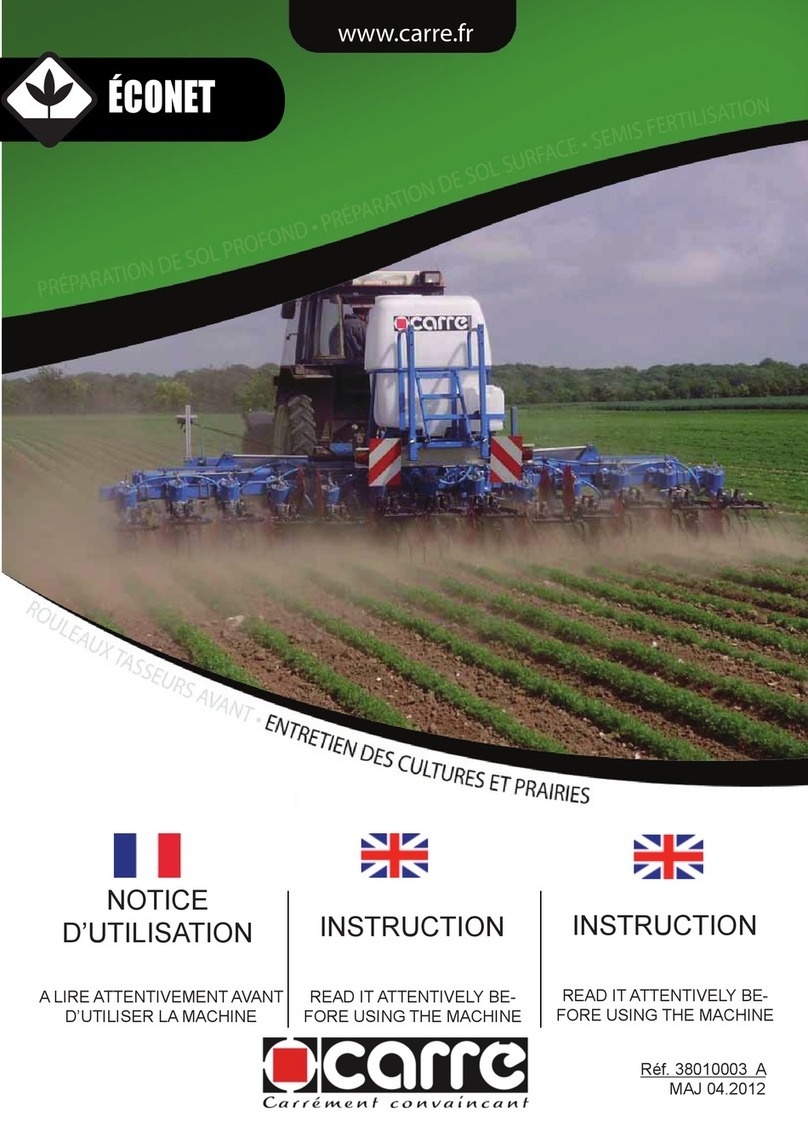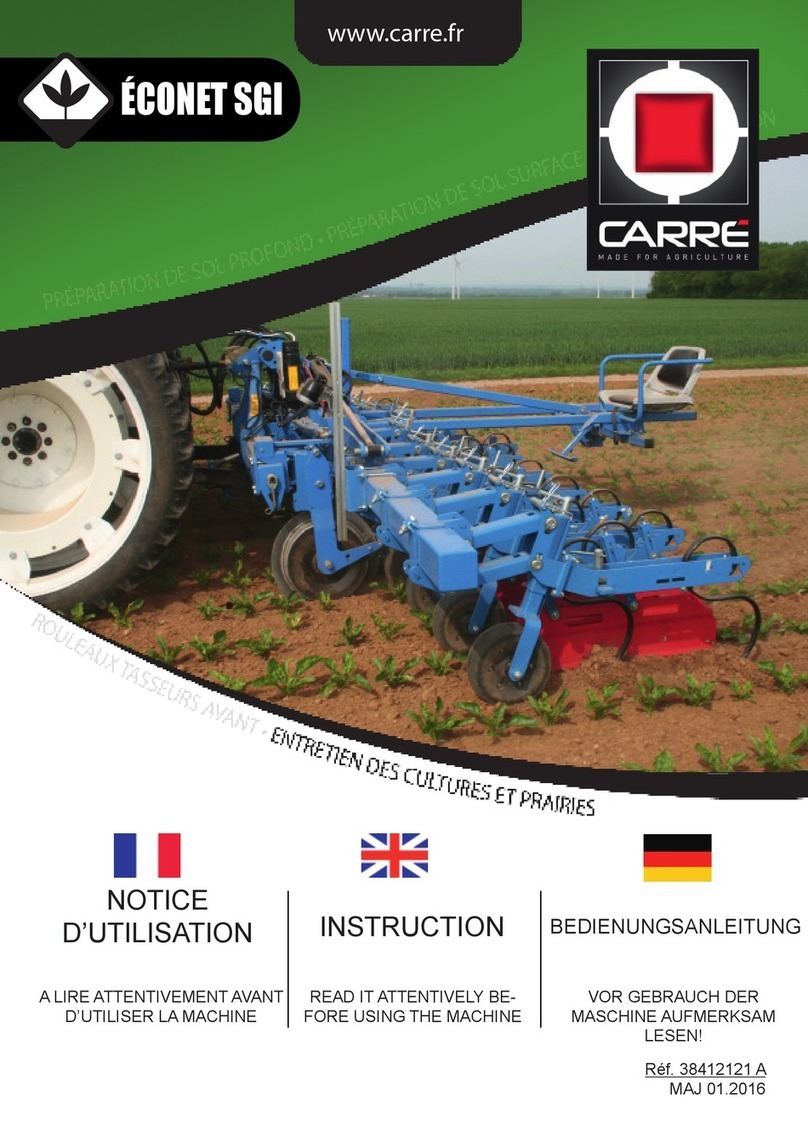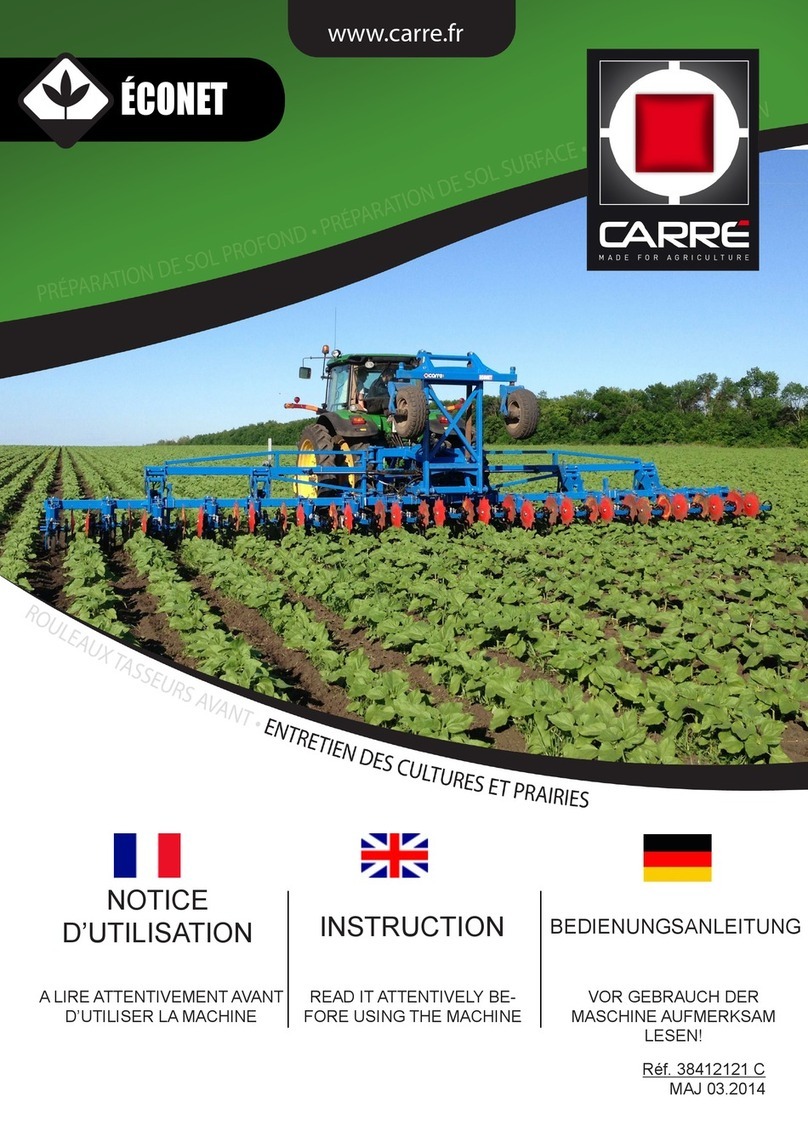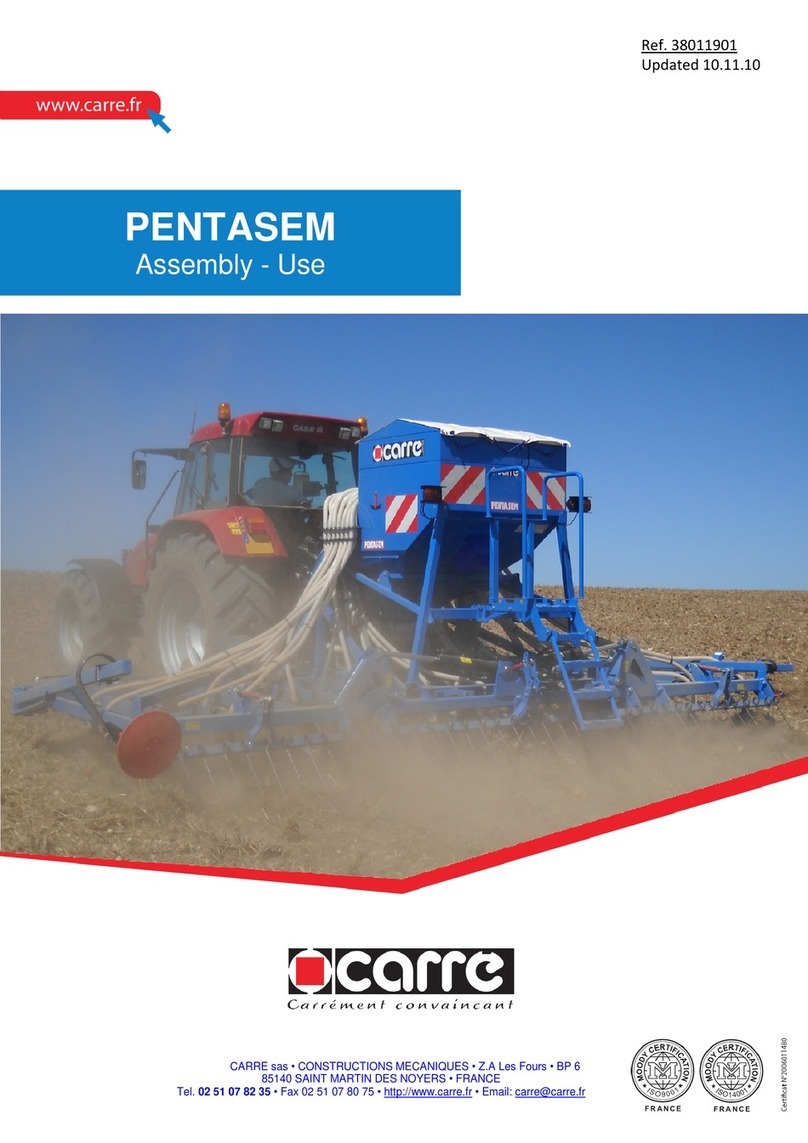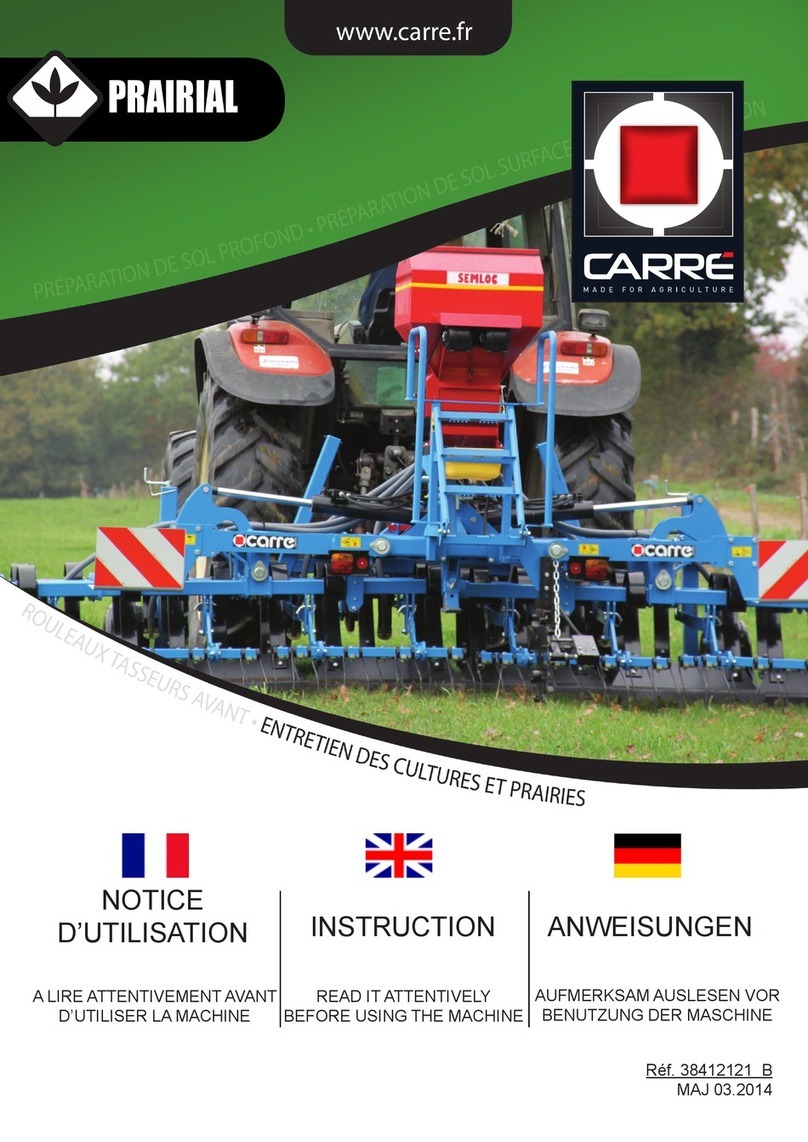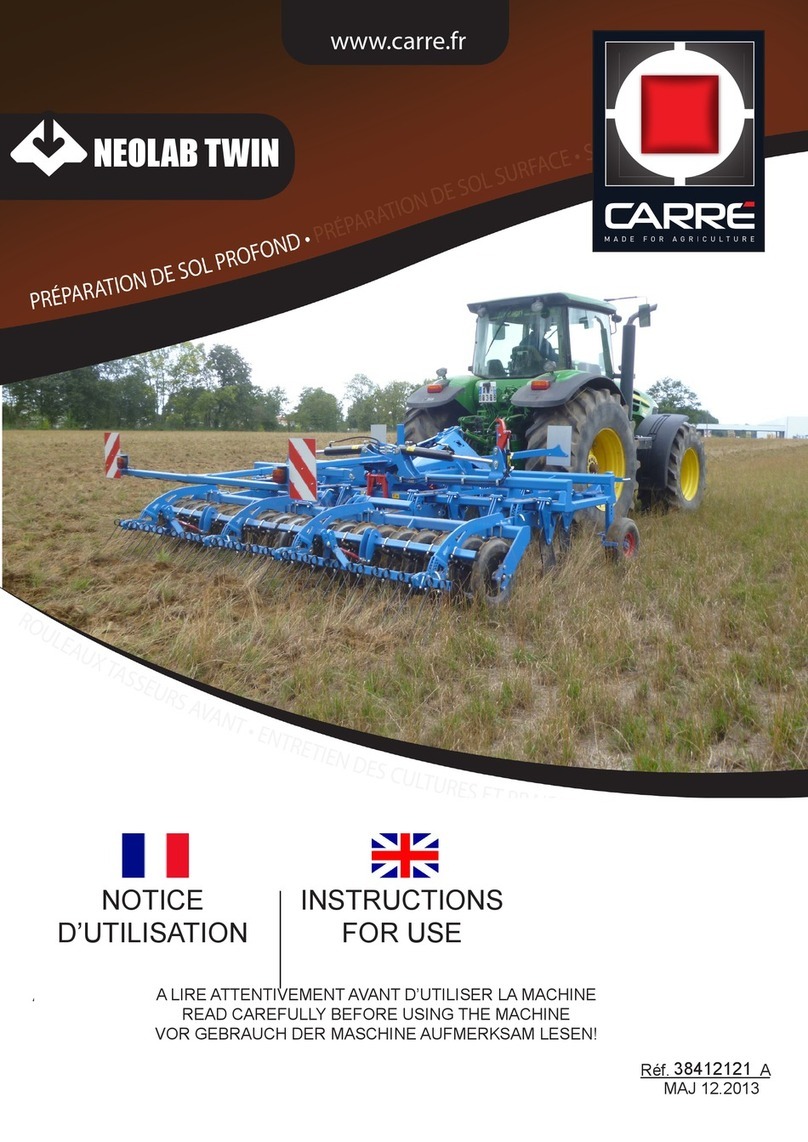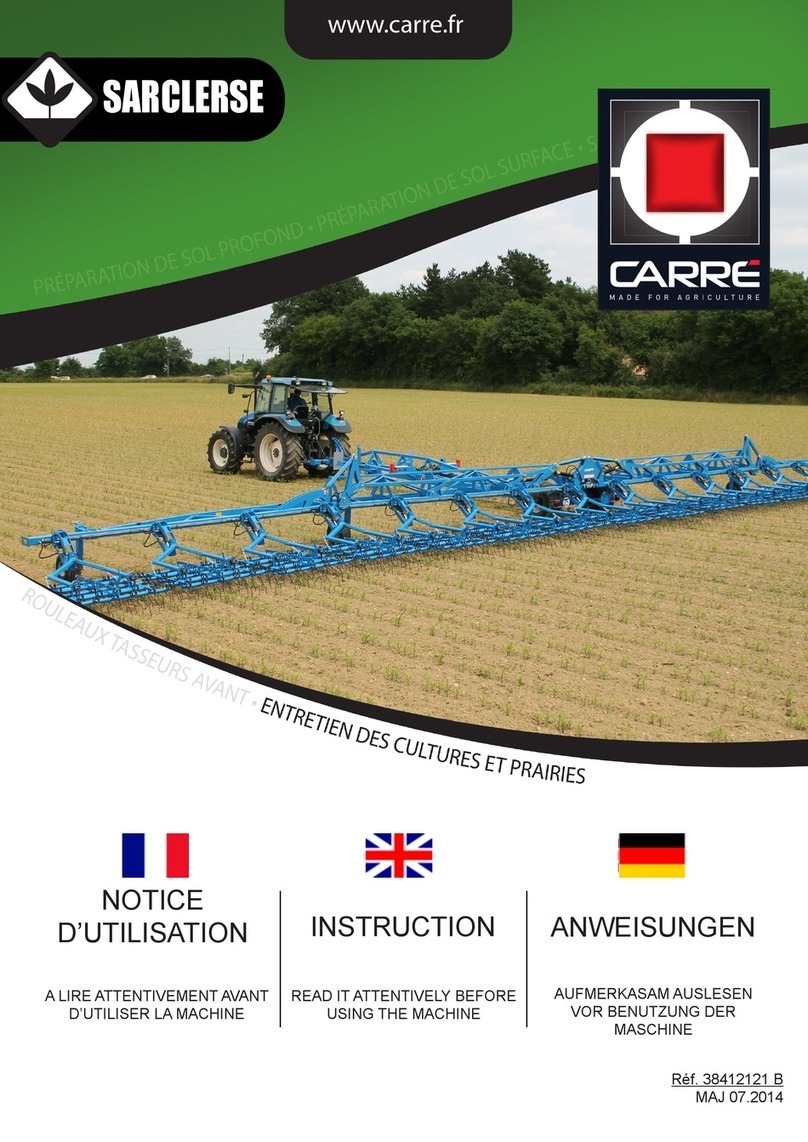
Page 7
3.4.1 Working on slopes
3.4.2 Lighting , night work
3.5 Manufacturer & user responsibilities
Follow all installation instructions, operating settings,maintenance and repair in this manual .
Only use spare parts and accessories conform to the manufacturer ‘s recommendations.
Do not change yourself and do not change another person your machine and its accessories (
mechanical, electrical , hydraulic, pneumatic ) without
seek prior consent from the manufacturer.
Failure to comply with these rules can make your machine dangerous . In case of damage or
injury , product liability will be completely cleared.
4. GENERAL SAFETY RULES
The other chapters of the instructions provide additional information that you also respect for your
safety.
Remember that vigilance and caution are the best assets of your safety.
Regulations and rules of prevention against accidents and safety related to occupational health,
protection of the environment and trafc must be observed at all times.
Make sure that no people, animals and no obstacle is not closed to the machine before starting and
during operation.
Keep children away permanently from the machine.
Never carry passengers on the machine OR Do not carry passengers by using seats provided for
this purpose, in accordance with current regulations.
Do not walk on the hoods or in any other place of the machine, except the areas provided for this
purpose (ladder, platform, means of access to the workstation)
Before working on the machine, ensure that it can not be started accidentally.
All remote commands (rope, cable, rod, exible, etc.) must be placed in designated areas so that
they may accidentally trigger a risk of generating operation of accident or damage.
Before use, check the tightening of screws, nuts and ttings. Tighten if necessary.
Before use, after each adjustment and maintenance, ensure that all devices protection are in place
and in good condition, and that their locks are engaged.
Make sure the plot (or lawn, etc.) has no unevenness and debris (wood, scrap metal, plastics, fence,
etc.) that can be thrown by the machine or damage it.
Do not wear loose clothing, long hair and jewelry and free that might be caught or trapped by ele-
ments of the machine in motion.
Never put hands, arms or feet moving parts, even at low speed. Keep your vis-à-vis animated ele-
ments distances.
When you hear a sound or feel unusual vibrations, stop the operation of the machine, look for and
eliminate the cause of the incident before returning to work. Call your dealer if necessary.
4.1 Generalities






